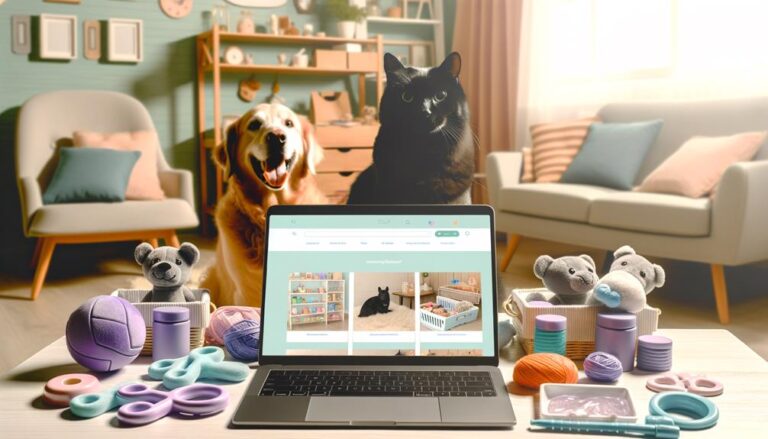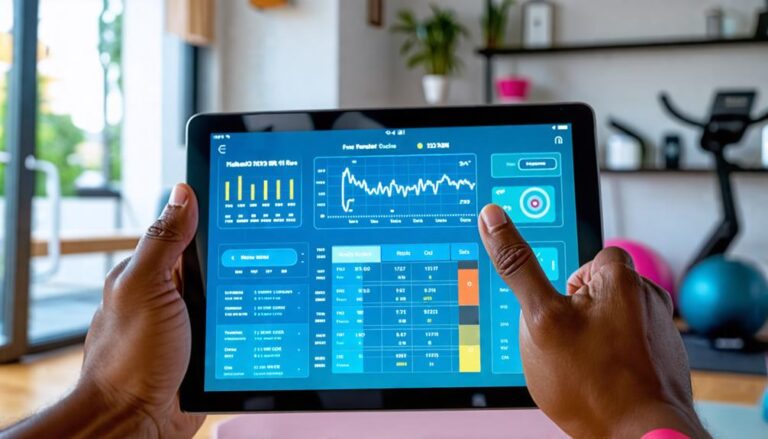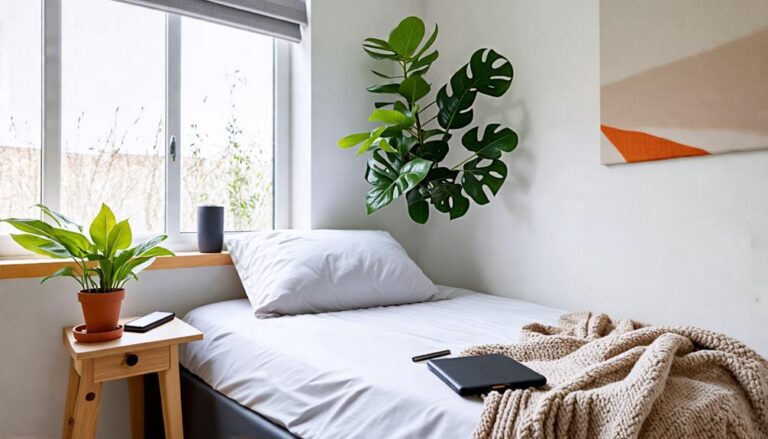Creating Custom WordPress Themes for Bloggers: How It Works and How to Implement It
Just as a master builder wouldn't construct a house without a blueprint, you shouldn't dive into developing custom WordPress themes for bloggers without a clear plan. This side hustle involves several steps, each crucial for creating a theme that not only looks good but also functions seamlessly.
Understanding the Process
The first step is to identify the blog's primary purpose and target audience. This foundational step helps you create a design that genuinely resonates with the intended readers.
For instance, a travel blog targeting adventure enthusiasts will have a different aesthetic and functional requirements compared to a tech blog aimed at professionals.
Planning the Site's Architecture
Next, contemplate the site's architecture. Think about how the content will be organized and accessed.
Categories, tags, and navigation menus play a significant role here. A well-thought-out structure improves user experience and keeps visitors engaged.
Essential Features
Determine the essential features the blog will need.
Will it have a comments section, social media integration, or an e-commerce component? Identify these needs early on to streamline the development process.
Design and User Experience
Design isn't just about looking good; it's about creating an intuitive user experience.
Choose color schemes, fonts, and layouts that align with the blog's theme and make navigation easy. Remember, a visually appealing and user-friendly site keeps readers coming back.
Implementing Your Vision
Now that you've laid the groundwork, it's time to bring your vision to life.
Use WordPress's theme development tools and follow best practices in coding. Test your theme thoroughly to ensure it works well across different devices and browsers.
Launch and Maintenance
Once your theme is ready, launch it and keep an eye on its performance.
Regular updates and tweaks based on user feedback will help maintain its effectiveness and relevance.
By following these steps, you'll not only create a custom WordPress theme that meets the blogger's needs but also set the stage for a successful and profitable side hustle.
Planning Your Custom Theme
Planning Your Custom Theme for Your Side Hustle Blog
As you begin creating a custom WordPress theme for your side hustle blog, planning your theme's architecture and design elements upfront is essential to ensure that the final product aligns with your specific business goals and audience needs.
Start by defining your blog's purpose and identifying your target audience. What type of content will you be publishing? Who'll be reading your blog? Answering these questions will help you determine the necessary features and functionality to include in your theme.
With a clear understanding of your blog's purpose and audience, you can begin outlining the overall structure and layout of your theme. Consider the types of pages you'll need (e.g., home, about, contact) and the type of content you'll be publishing (e.g., articles, tutorials, product reviews).
This will help you decide on the best layout and design elements to incorporate into your theme. By taking the time to plan your theme's architecture and design elements upfront, you'll establish a solid foundation for your custom WordPress theme and create a better user experience for your readers.
This will also save you time and effort in the long run, as you'll avoid costly redesigns and rewrites, allowing you to focus more on growing your side hustle.
Essential Tools and Software
Essential Tools and Software for Your Side Hustle
With your side hustle's architecture and design elements planned, you can now shift your focus to selecting the tools and software that will help you bring your custom WordPress theme to life.
Start with the core set of tools you'll use for development. You'll need a solid development environment, such as a local server or an online sandbox, to build and test your theme. Don't forget to set up version control using Git to keep track of changes and collaborate with others.
When it comes to design, gather inspiration from various sources and create a cohesive visual identity for your theme. Consider the following essentials:
- *Color palettes*: Select a range of colors that reflect your side hustle's personality and are accessible to a wide audience.
- *Typography choices*: Pick fonts that are readable, consistent, and align with your side hustle's tone.
Theme frameworks can also help streamline your development process. Research popular options, such as WordPress's built-in theme frameworks, and plugin recommendations to enhance your theme's functionality.
With these tools and software in place, you'll be well on your way to crafting a custom WordPress theme that meets your side hustle's needs.
Designing for User Experience
As you design your custom WordPress theme for your side hustle, you'll want to prioritize website navigation best practices to ensure your site is easy to explore.
You'll also need to incorporate responsive design essentials, so your site adapts seamlessly to various devices and screen sizes.
Website Navigation Best Practices
When designing a custom WordPress theme for your side hustle, crafting an intuitive navigation system is essential for guaranteeing that your website visitors can easily find the content they need.
You want to create a seamless user flow that guides them through your site, making it easy for them to find what they're looking for. To achieve this, you'll need to take into account accessibility standards, mobile navigation, and the placement of navigation menus.
Here are some key considerations to keep in mind:
- Clear navigation menus: Use clear and concise labels for your menu items, and ensure they're easily accessible on all devices.
- Breadcrumb trails: Provide a clear trail of breadcrumbs to help users understand their current location and navigate back to previous pages.
You'll also want to consider using dropdown menus to organize your side hustle's content, and placing calls to action (CTAs) in prominent locations to encourage users to take action.
Responsive Design Essentials
Crafting a responsive design is essential for delivering a seamless user experience across various devices and screen sizes. You'll want to confirm your custom WordPress theme adapts effortlessly to different orientations and resolutions. To achieve this, you'll adopt a mobile-first approach, designing for smaller screens first and then working your way up to larger devices. This approach guarantees that your theme's layout, typography, and imagery scale up effectively.
When building your responsive design, you'll focus on creating fluid grids that adjust to different screen sizes. This involves using relative units, such as percentages or ems, to define element widths and heights.
You'll also use CSS media queries to apply different styles based on specific screen sizes or orientations. Additionally, you'll confirm that your theme's images and videos scale properly, using techniques like responsive imagery or lazy loading.
Building a Responsive Layout
Creating a Responsive Layout for Your Side Hustle Website
You can build a responsive layout for your side hustle website by using a combination of flexible grids, images, and media queries to ensure your site adapts seamlessly to various screen sizes and devices. To achieve this, consider adopting a mobile-first approach, where you design for smaller screens first and then work your way up to larger ones. This ensures that your layout looks great on mobile devices and is optimized for performance.
Grid systems are also essential for building a responsive layout. You can use CSS grid or flexbox to create flexible and adaptable grids that can be easily customized for different screen sizes. By leveraging the power of grid systems, you can create complex layouts that are both visually appealing and responsive.
Here are just a few benefits of building a responsive layout for your side hustle website:
- Your site will look great on all devices, from smartphones to desktop computers.
- Your site's performance will improve, leading to faster load times and higher engagement.
Customizing With Code Snippets
Elevate your side hustle website to the next level by customizing it with code snippets. This approach lets you add tailored functionality and precise styling without needing to overhaul your entire theme. By injecting custom code snippets, you can enhance your theme's performance, user experience, and overall appearance. You'll have the ability to make targeted changes, such as modifying layout structures, adding custom widgets, or tweaking responsive design elements.
When customizing with code snippets for your side hustle, prioritize code optimization to ensure your theme remains lightweight and efficient. This involves writing clean, modular code that minimizes HTTP requests and reduces page load times, improving your website's search engine rankings and user engagement.
Additionally, customizing with code snippets supports theme scalability, enabling your website to adapt to growing traffic and evolving user needs. By leveraging code snippets, you can incrementally add features and functionality, ensuring your theme remains flexible and responsive to changing demands.
Mastering the art of customizing with code snippets will unlock new possibilities for your WordPress theme, taking your side hustle website to new heights.
Testing and Debugging Techniques
As you develop and refine your custom WordPress theme as a side hustle, thorough testing and debugging become crucial in ensuring that your code snippets integrate smoothly and function as intended.
Employing various techniques to identify and fix errors will help make your theme stable and high-performing, thereby enhancing its marketability.
To ensure your code is reliable, consider implementing unit testing. This involves writing tests for individual components of your code to verify that they behave as expected. By catching errors early, you can prevent them from affecting the rest of your theme, which is especially important when you're juggling multiple projects as a side hustler.
When errors do occur, it's essential to have a robust error handling strategy in place. This includes:
- Logging errors: Keep a record of errors to help diagnose issues and improve future projects.
- Displaying error messages: Inform users of errors in a clear and concise manner to maintain a professional image.
Conclusion
As you put the final touches on your custom WordPress theme, you're not just crafting code – you're building a bridge between the blogger's message and their audience, all while generating a lucrative side hustle.
A well-designed theme is the master key that opens engagement, accessibility, and user satisfaction, translating to potential income.
By combining technical expertise with a deep understanding of the blog's purpose, you're creating a digital sanctuary where ideas flourish, connections are forged, and your side business thrives.
Your theme is the catalyst that brings it all to life, turning your passion into profit.
















































0
View comments